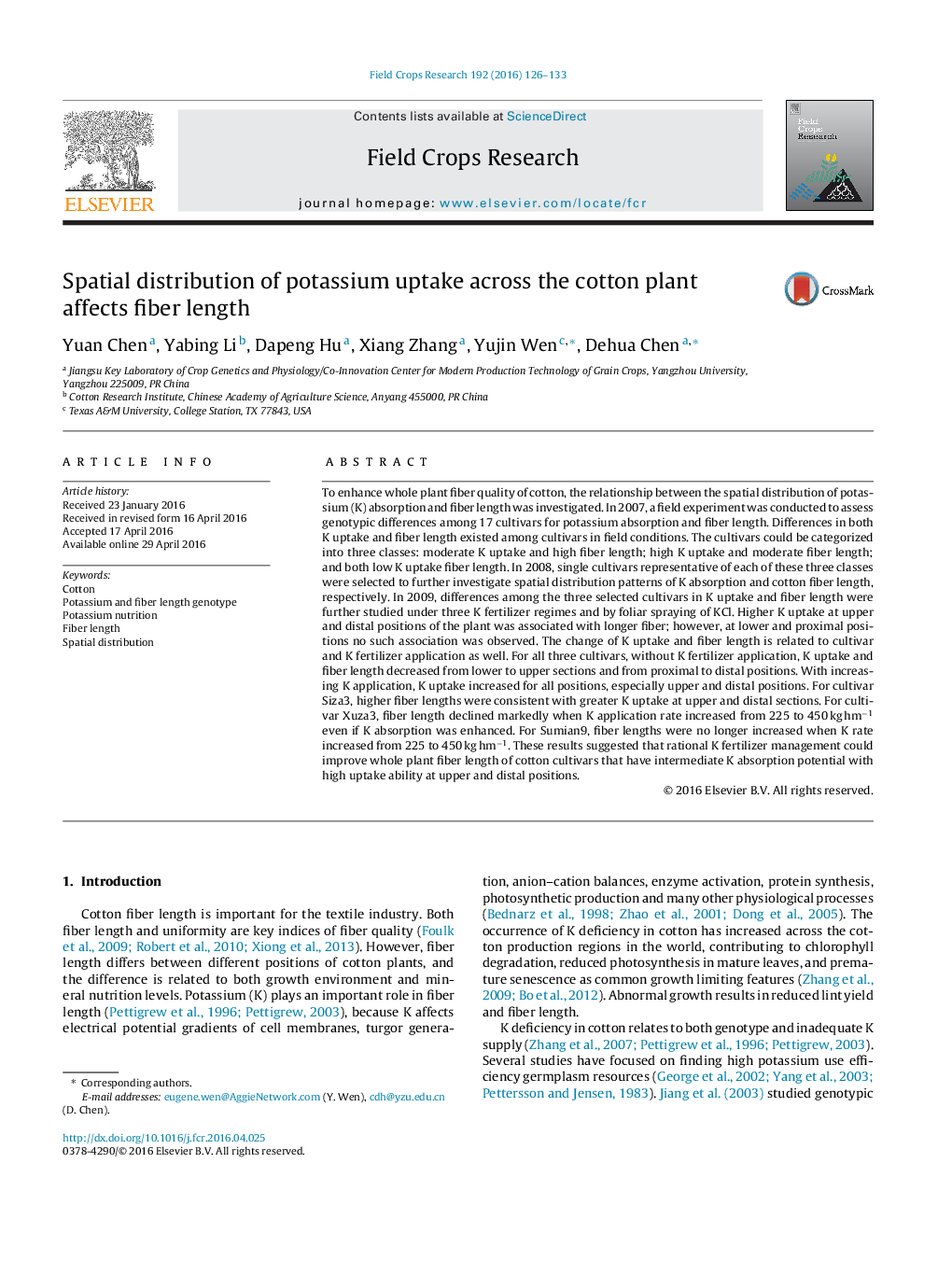| Article ID | Journal | Published Year | Pages | File Type |
|---|---|---|---|---|
| 6374497 | Field Crops Research | 2016 | 8 Pages |
â¢The cultivar with intermediate K uptake had higher fiber length.â¢Higher K uptake at upper and distal sections associated with longer fiber length.â¢K uptake and fiber length decreased from all sections at K deficiency condition.â¢K uptake of upper and distal sections improved fiber length With increasing K rates.â¢Change of K uptake and fiber length related to cultivar and K fertilizer application.
To enhance whole plant fiber quality of cotton, the relationship between the spatial distribution of potassium (K) absorption and fiber length was investigated. In 2007, a field experiment was conducted to assess genotypic differences among 17 cultivars for potassium absorption and fiber length. Differences in both K uptake and fiber length existed among cultivars in field conditions. The cultivars could be categorized into three classes: moderate K uptake and high fiber length; high K uptake and moderate fiber length; and both low K uptake fiber length. In 2008, single cultivars representative of each of these three classes were selected to further investigate spatial distribution patterns of K absorption and cotton fiber length, respectively. In 2009, differences among the three selected cultivars in K uptake and fiber length were further studied under three K fertilizer regimes and by foliar spraying of KCl. Higher K uptake at upper and distal positions of the plant was associated with longer fiber; however, at lower and proximal positions no such association was observed. The change of K uptake and fiber length is related to cultivar and K fertilizer application as well. For all three cultivars, without K fertilizer application, K uptake and fiber length decreased from lower to upper sections and from proximal to distal positions. With increasing K application, K uptake increased for all positions, especially upper and distal positions. For cultivar Siza3, higher fiber lengths were consistent with greater K uptake at upper and distal sections. For cultivar Xuza3, fiber length declined markedly when K application rate increased from 225 to 450 kg hmâ1 even if K absorption was enhanced. For Sumian9, fiber lengths were no longer increased when K rate increased from 225 to 450 kg hmâ1. These results suggested that rational K fertilizer management could improve whole plant fiber length of cotton cultivars that have intermediate K absorption potential with high uptake ability at upper and distal positions.
